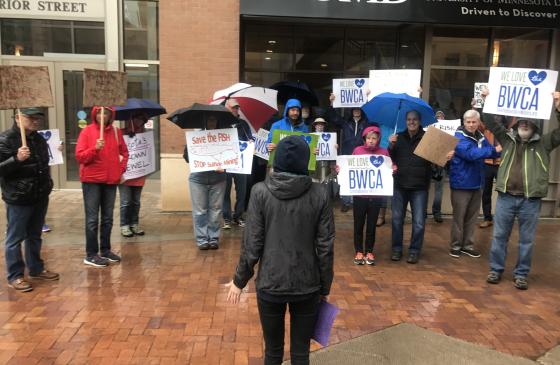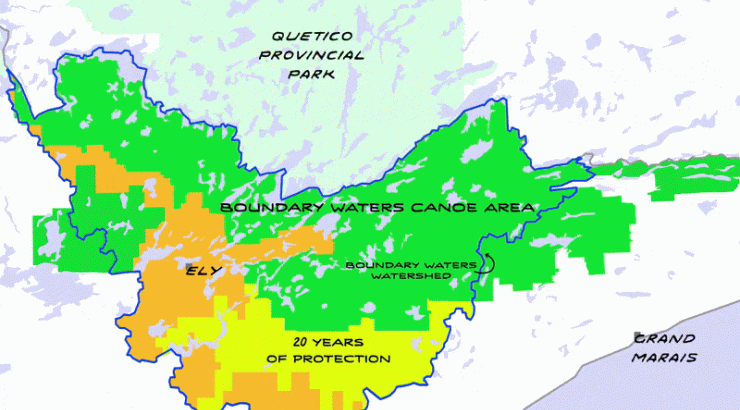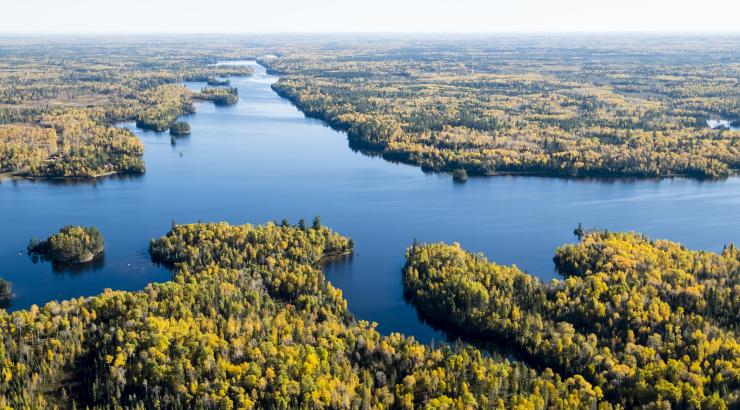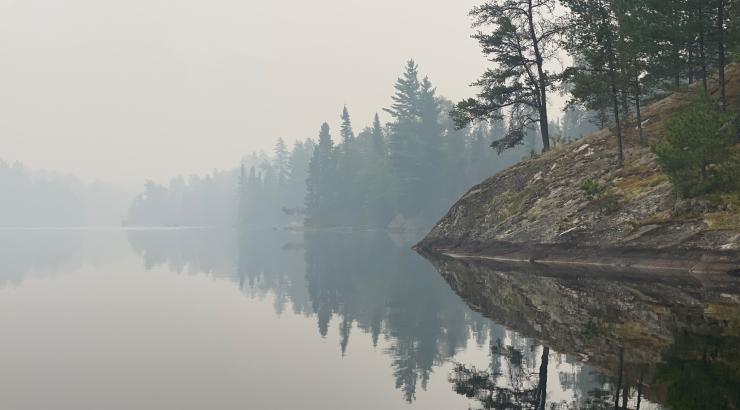Over the last year we have made significant steps toward protecting the Boundary Waters Wilderness from sulfide-ore copper mining proposed on nearby lands in the Wilderness’ watershed. Specifically, Twin Metals’ request to renew its mineral leases was denied in December and a watershed-wide environmental review was initiated by federal agencies on January 13. The comment period for this environmental review was initially set for 90 days, but has now been extended to August 11, 2017. To keep us on our path to gain permanent protection for the Wilderness, we need your help. Below we break down the importance of this comment period, all the recent news and how you can help.
Understanding the Process
In our latest animation video, Path to Permanent Protection, we share an update on the latest actions taken to protect the Wilderness, the steps needed to gain permanent protection and where we are along this path. The environmental review of the Boundary Waters watershed is a critical step in this process, and has been used before to protect other special places like Yellowstone and the Grand Canyon. To learn more about the risks facing the Boundary Waters, watch our first animation video, Drawn to Save the Boundary Waters.
Public Comment Hearing in Duluth
This past March, the Campaign and many supporters gathered in Duluth, Minnesota, for a Public Comment Hearing held at the Duluth Entertainment and Convention Center by the U.S. Forest Service, as part of the scoping process for the two-year environmental review. Before the hearing, we gathered for a rally in front of the convention center with “We Love the BWCA” signs, and speakers shared Boundary Waters stories and reasons for wanting to protect this unique Wilderness area.
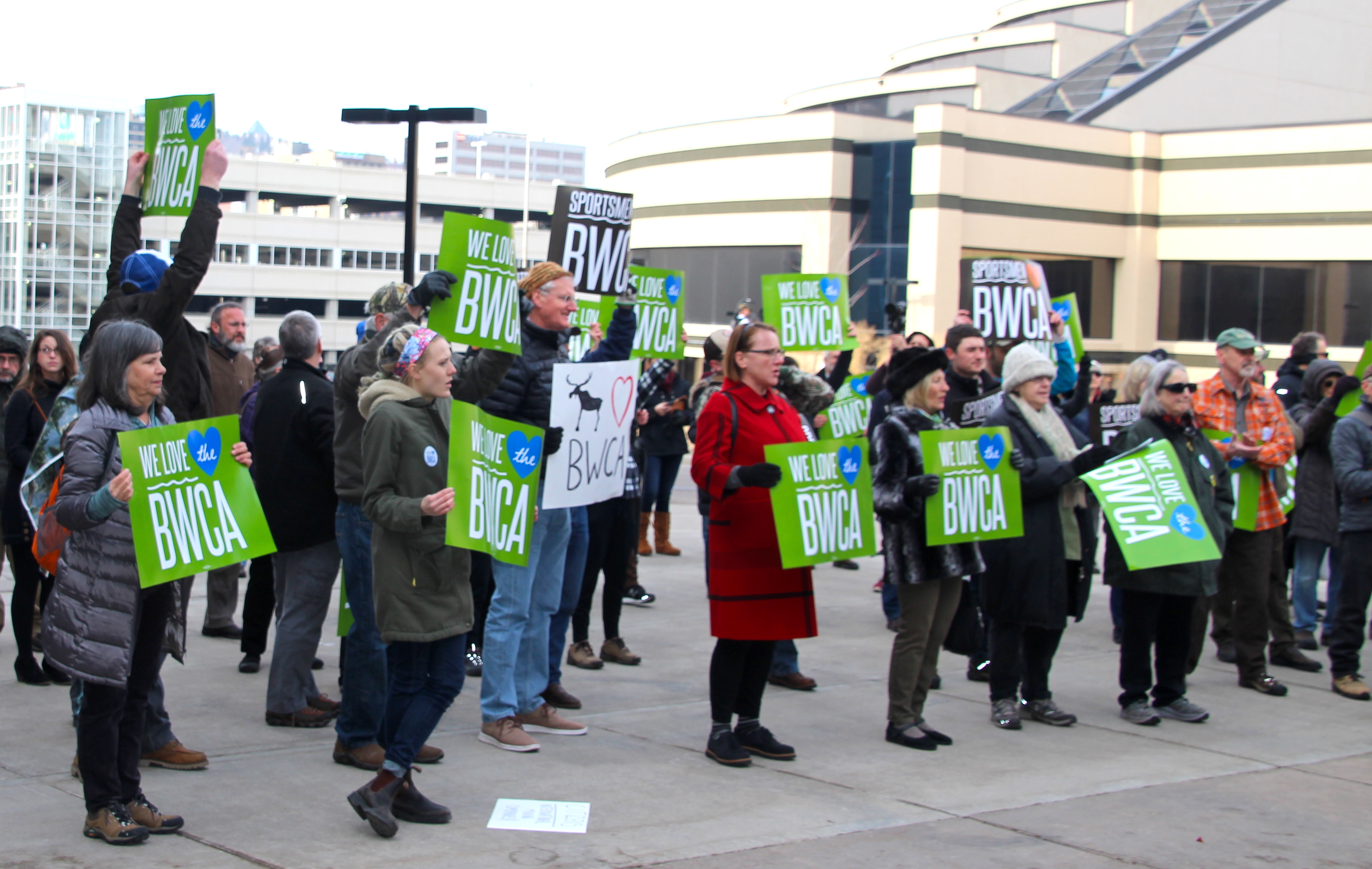
During the meeting, federal agencies heard comments from business owners, Arrowhead residents, Minnesotans who enjoy wilderness recreation, clean water supporters, and sportsmen and women. Speakers addressed issues like the tourism and outdoor recreation economy, the risky history of this type of mining, the damage pollution from sulfide-ore copper mining would do to the ecosystem and human health, and much more. The U.S. Forest Service also heard from supporters of sulfide-ore copper mining.
More of these public comment hearings are being planned this summer in Northeastern Minnesota and in the Twin Cities. Stay tuned for the dates and locations of these hearings.
Facing the Opposition
At the end of January, Congressman Rick Nolan urged the U.S. Department of Agriculture “to reverse the agency’s decision to withdraw more than 234,000 acres out of multiple-use purpose from the Superior National Forest." In response, the Campaign held an impromptu rally outside of the congressman’s office in Duluth. We asked supporters to call his office to speak up for the value of this environmental review and use science and public input to guide decisions about the future of the Boundary Waters.
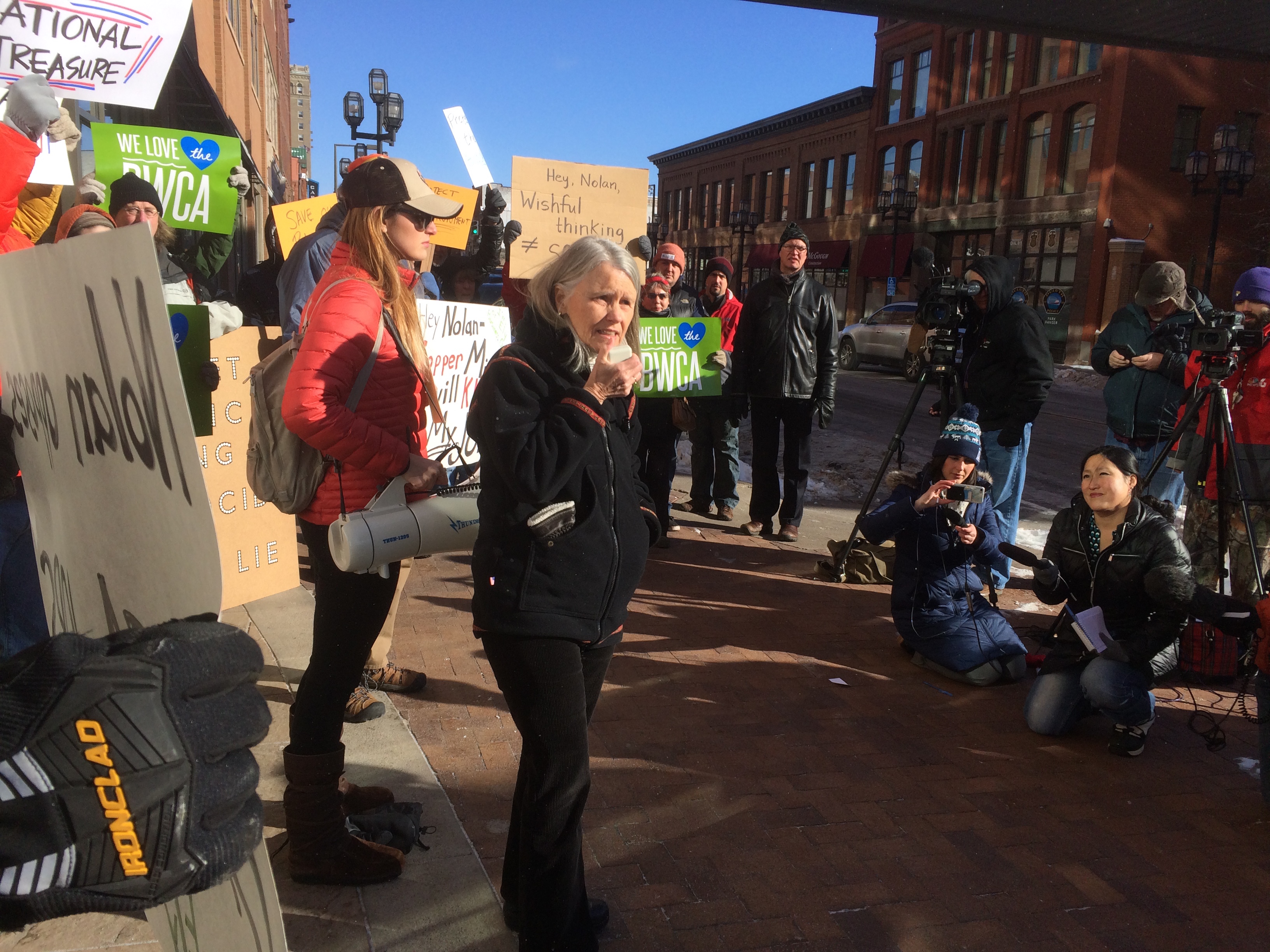
On April 26, Rep. Nolan met with Secretary of the Interior Ryan Zinke to seek support for renewing mining exploration leases for Twin Metals Minnesota. Rep. Nolan's action to halt this existing environmental review benefits a Chilean mining company at the risk of permanent damage to the Boundary Waters. We rallied outside of his Duluth office shortly after to again let him know we opposed his actions.
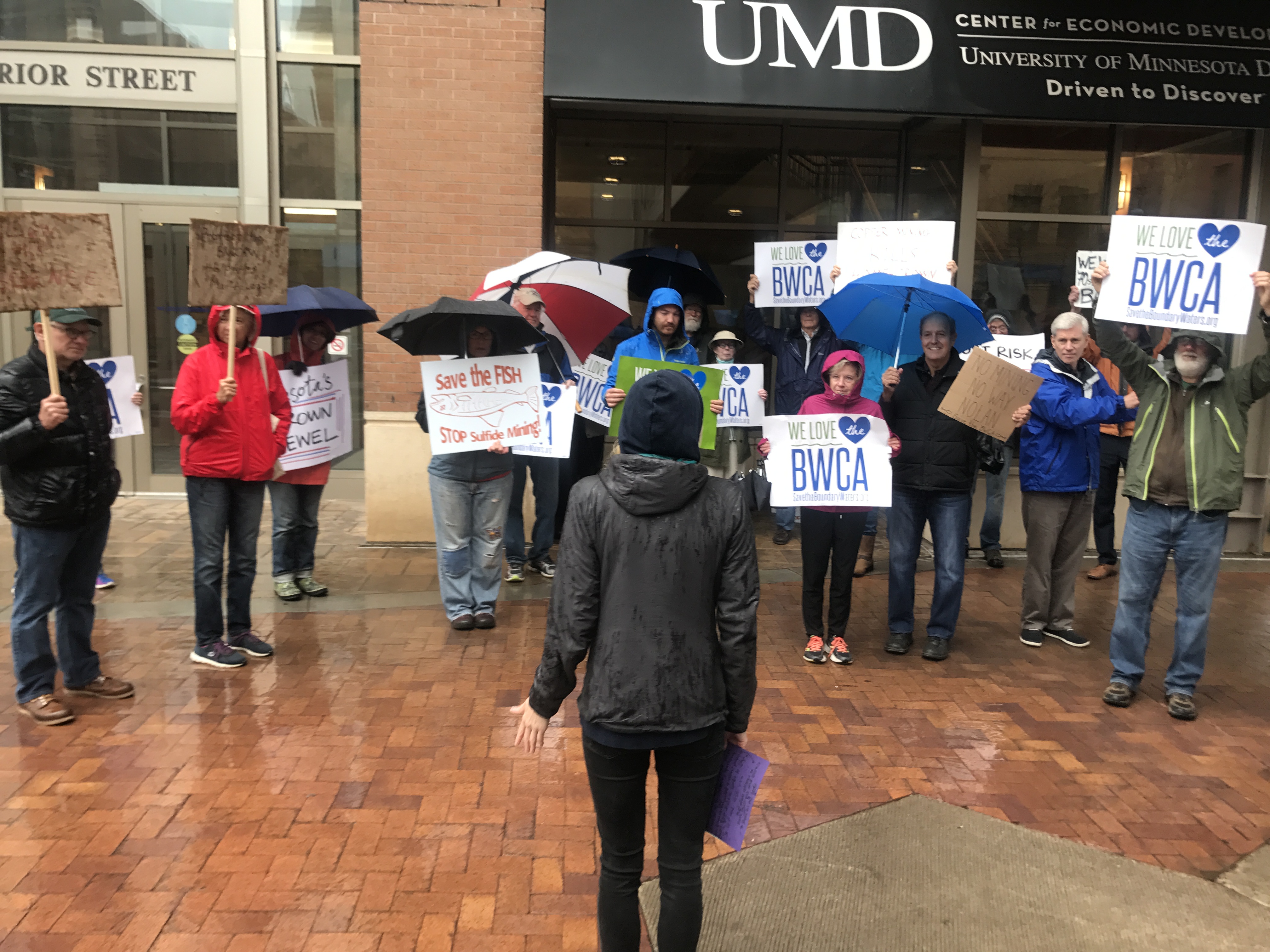
Antofagasta's Toxic History
In addition to our concerns about the impact sulfide-ore copper mining would have on the environment, we are also concerned about the history of the company proposing this type of mining at the doorstep of the Wilderness. The copper mining industry has a long history of acid mine drainage and heavy metals leaching with catastrophic environmental impacts. This risky type of mining has wiped out the water supply for rural areas and devastated fish and wildlife. Twin Metals Minnesota, a wholly-owned subsidiary of Antofagasta PLC of Chile, proposed four mines right on the edge of the Boundary Waters. Antofagasta, which owns several copper mines in Chile, has a concerning environmental and social track record. Plus, in a troubling conflict of interest, Ivanka Trump and Jared Kushner’s new landlord just happens to be Andrónico Luksic, whose family owns Antofagasta.
Review Will Continue
On May 25, during a meeting of the House Interior and Environment Appropriations Subcommittee, Secretary of Agriculture Sonny Perdue confirmed the continuation of the environmental impact study on whether or not to ban sulfide-ore copper mining in the Boundary Waters watershed. Perdue told Representative Betty McCollum that he discussed the study with Interior Secretary Ryan Zinke and that they're going to let the environmental review continue and make no decision before it concludes.
This environmental review allows the opportunity to gather input from the public and uses the best-available science to determine whether to allow sulfide-ore copper mining in the watershed of the Wilderness. U.S. Forest Service Chief Tom Tidwell stated during the hearing that sulfide-ore copper mining in water-intensive areas like the Boundary Waters is “more challenging” and that the review could conclude that mining near the BWCA “may be too hazardous.”
“I very much appreciate that Secretary Perdue confirmed that the Trump administration will allow this important study to proceed and that Chief Tidwell acknowledged the serious risks that copper-sulfide mining can pose,” Congresswoman McCollum said in a press release. “Minnesota’s Boundary Waters are a national treasure, and I look forward to working together with Secretary Perdue to ensure that we ‘do no harm’ to this pristine wilderness.”
Timeline of Recent Events
- December 14, 2016: U.S. Forest Service explained it would not agree to the renewal of Twin Metals’ two expired federal mineral leases.
- December 15, 2016: U.S. Bureau of Land Management (BLM), which manages federal minerals on the Superior National Forest, informed Twin Metals that the company’s request for renewal of the mineral leases was denied.
- December 15, 2016: U.S. Departments of Agriculture and Interior (parent agencies to the Forest Service and BLM) announced they would bar any new mineral leases or mineral exploration on key lands around the Boundary Waters for two years, in order to study the Boundary Waters watershed and determine whether it is the wrong place for sulfide-ore copper mining.
- January 13, 2017: Forest Service announced the beginning of a comment period to determine the scope (i.e., what issues should be reviewed) of the environmental review.
- January 31, 2017: Congressman Rick Nolan urged the U.S. Department of Agriculture “to reverse the agency’s decision to withdraw more than 234,000 acres out of multiple-use purpose from the Superior National Forest.”
-
March 16, 2017: Public Comment Hearing in Duluth, Minnesota was held by the U.S. Forest Service as part of the scoping process for the two-year environmental review.
-
April 26, 2017: Rep. Nolan met with Secretary of the Interior Ryan Zinke to seek support for renewing mining exploration leases for Twin Metals Minnesota.
-
May 25, 2017: Secretary of Agriculture Sonny Perdue confirmed that the environmental impact study on banning sulfide-ore copper mining in the Boundary Waters watershed will proceed.
What’s Next for the Campaign?
We've made first steps on our short, medium and long-term goals for permanent protection of the Boundary Waters and its watershed from sulfide-ore copper mining. But there's still more work to be done.
![]()
Short Term: Twin Metals Minnesota was denied the renewal they requested of its expired mineral leases.
![]()
Medium Term: A 20-year administrative “withdrawal,” during which no new leases or exploration of federal minerals would occur withinthe Boundary Waters watershed.
![]() Long Term: Permanent protection of the Boundary Waters Wilderness by withdrawal of federal minerals within its watershed.
Long Term: Permanent protection of the Boundary Waters Wilderness by withdrawal of federal minerals within its watershed.
How YOU can Help:
- Join us at upcoming events, like our Drink For a Cause: 2017 Canoe Country Cream Ale (re) Release Party at NorthGate Brewing in Minneapolis on June 21 (Facebook).
- Volunteer
- Donate
- Join Wilderness Warriors
